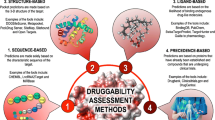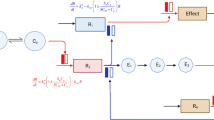Abstract
When we build a predictive model of a drug property we rigorously assess its predictive accuracy, but we are rarely able to address the most important question, “How useful will the model be in making a decision in a practical context?” To answer this requires an understanding of the prior probability distribution (“the prior”) and hence prevalence of negative outcomes due to the property being assessed. In this perspective, we illustrate the importance of the prior to assess the utility of a model in different contexts: to select or eliminate compounds, to prioritise compounds for further investigation using more expensive screens, or to combine models for different properties to select compounds with a balance of properties. In all three contexts, a better understanding of the prior probabilities of adverse events due to key factors will improve our ability to make good decisions in drug discovery, finding higher quality molecules more efficiently.


Similar content being viewed by others
References
Jaynes ET (2003) Probability theory: the logic of science: principles and elementary applications vol 1. Cambridge University Press, Cambridge
Chadwick AT, Segall MD (2010) Overcoming psychological barriers to good discovery decisions. Drug Discovery Today 15:561–569
Welch HG, Black WC (2010) Overdiagnosis in cancer. J Natl Cancer Inst 102:605–613
COMARE (2007) 12th Report The impact of personally initiated X-ray computed tomography scanning for the health assessment of asymptomatic individuals. Chairman: Professor A. Elliott. COMARE Secretariat, Didcot. http://www.comare.org.uk/documents/COMARE12thReport.pdf. Accessed 7 June 2010
Di Masi JA, Hansen RW, Grabowski HG (2003) The price of innovation: new estimates of drug development costs. J. Health Econ. 22:151–185
Performance assessment: has DEREK been improved? http://www.aapspharmaceutica.com/meetings/files/36/Kreatsoulas.ppt#302,14. Accessed 12 Oct 2010
Ekins S, Boulanger B, Swaan PW, Hupcey MA (2002) Towards a new age of virtual ADME/TOX and multidimensional drug discovery. J. Comp. Aided Mol Design 16:381–401
Segall MD, Champness E, Obrezanova O, Leeding C (2009) Beyond profiling: using ADMET models to guide decisions. Chem. Biodiv. 6:2144–2151
Author information
Authors and Affiliations
Corresponding author
Rights and permissions
About this article
Cite this article
Segall, M., Chadwick, A. Making priors a priority. J Comput Aided Mol Des 24, 957–960 (2010). https://doi.org/10.1007/s10822-010-9388-7
Received:
Accepted:
Published:
Issue Date:
DOI: https://doi.org/10.1007/s10822-010-9388-7




